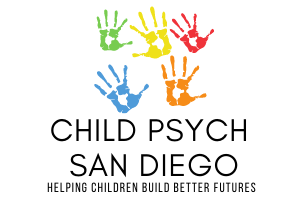Tantrums: Part 1
“What should I do when my child has a tantrum?”
This is a question I get asked frequently by parents with children of all ages. It can be difficult to respond appropriately in these situations, especially when the tantrum occurs in a public setting, in front of the watchful eyes of other family members, or during an already emotionally charged situation. Fortunately, a tantrum does not need to be an event that is dreaded. Today, we will discuss a few suggestions to help you more effectively navigate this common parenting challenge.
An important thing to do when a child is having a tantrum is to keep your cool. I know, I know, easier said than done. First, take some deep breaths and check in with yourself to make sure you are in a place to address the situation calmly and assertively. Remaining calm is crucial because, from a behavioral perspective, if we want to see a behavior occur less frequently, we must avoid reinforcing it. When parents engage in responding to an undesired behavior with negative attention, emotionality, or giving in because, “It’s easier to keep the peace,” they are inadvertently reinforcing the behavior, which means they will see it again.
Instead, try to reinforce the behavior you want to see. Alan Kazdin, Ph.D., author of the Kazdin Method for Parenting the Defiant Child, encourages parents to find the “positive opposite.” For example, you do not want to reinforce yelling, screaming, and hitting during a tantrum, however, you can reinforce keeping a calm or quiet voice and keeping hands to oneself. It is essential that when your child engages in a behavior you want to see happen more often (e.g., handling a disappointment without a blow up) you pay attention to that desired behavior and positively reinforce it.
Fortunately, one of the most powerful reinforcers for most children is parental attention and praise. This praise is most effective when it occurs promptly following the desired behavior. Effective praise is appropriately enthusiastic and specific without tacking on a putdown or criticism. For example, your child makes the choice to go to her room to cool down in a situation that usually results in a tantrum. When she comes out of her room, let her know, “Carrie, you did a fantastic job going to your room to take a break when you were upset. I am so proud of you. You are getting to be such a big girl!” The positive attention you have paid to this desired behavior will make you more likely to see this behavior again. Congratulations!!! Again, be mindful to avoid tacking on an insult or criticism with your praise. For example, do not say, “Why can’t you do that more of the time?” This can undo some of the positive effect of praise. Keep it positive. Incorporating some physical touch, such as a hug, a pat on the back, or a high five, is perfect punctuation to the praise.
If you would like to learn more about my practice and how I can support and assist you and your family, please call (619)839-5065 or email info@childpsychsandiego.com. You may also click on the button below to schedule a free 15-minute phone consultation.

